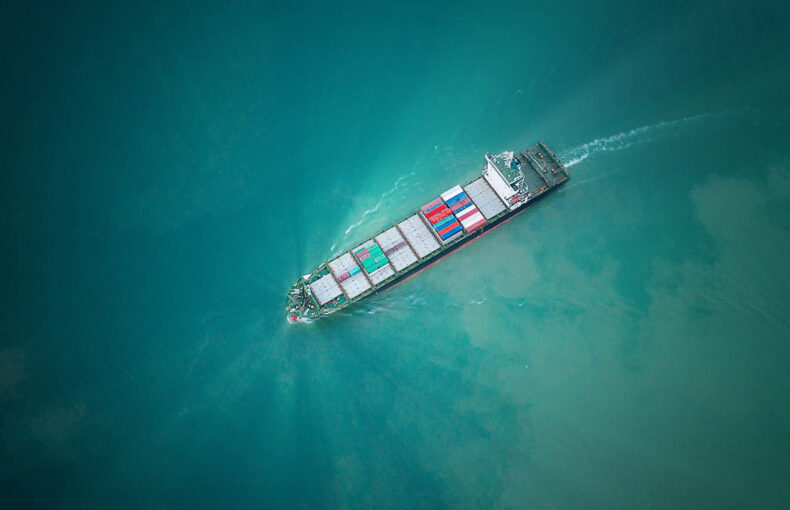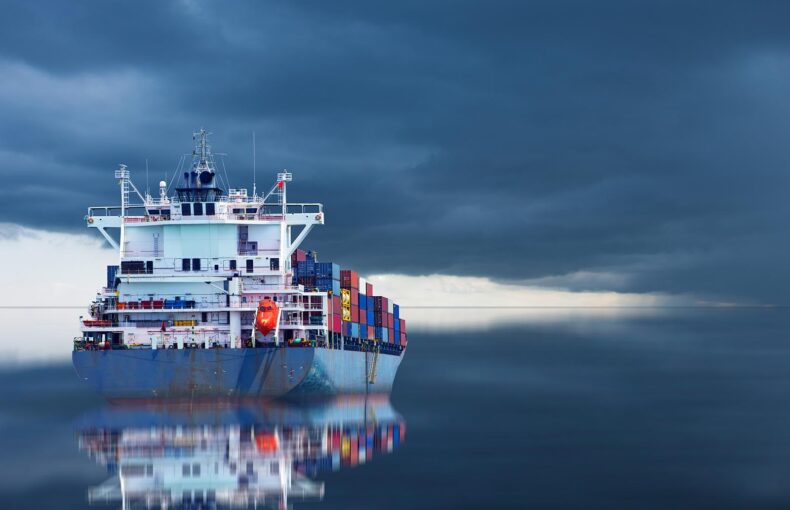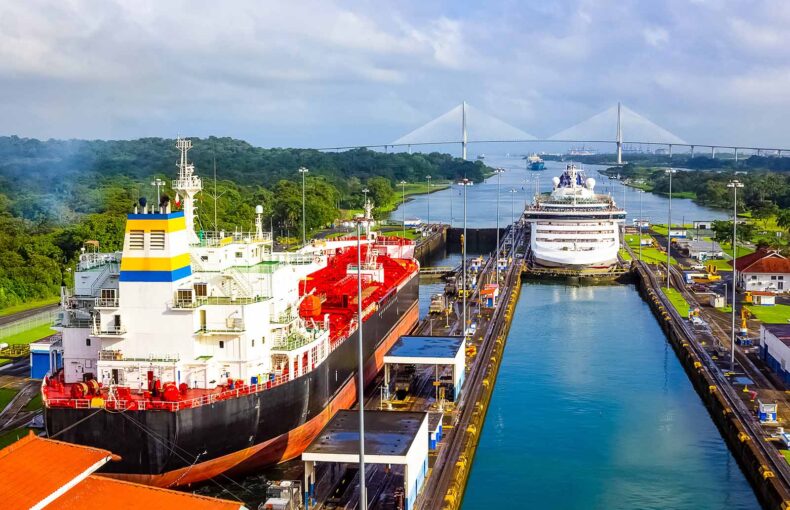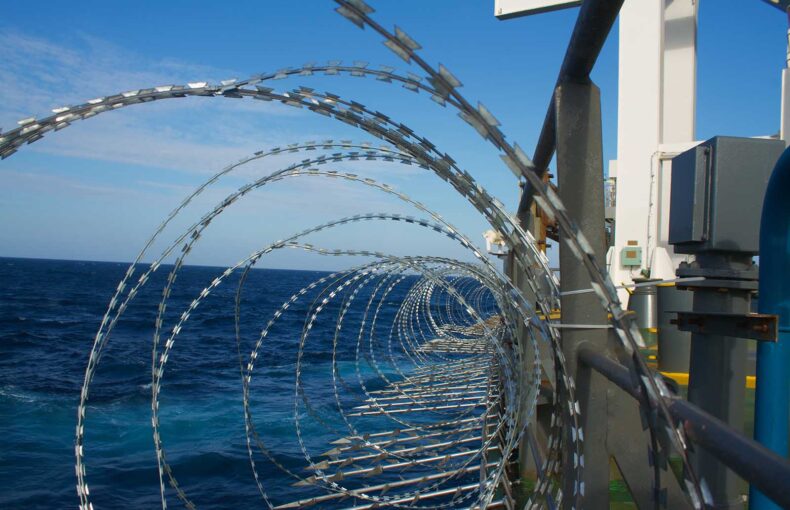Spire and Gravity Supply Chain solutions helping restore flow of goods
By giving customers more visibility and greater confidence to accurately predict delivery times.
The reorientation, even reinvention, of the industrial supply chain over the past 50 years has transformed the way things are made: your toaster, your car, your computing devices, your food. Every aspect of human creation has been transformed by the potent mix of corporate management transformation, infrastructure development, digitalization, geopolitical challenges, and economic reordering that came into being over the last half-century.
As this new global economic system grew, a corresponding supply chain—complex, powerful, virtually unquestioned—became its structural support system. It gradually came to be assumed that this immense mechanism was too big to fail.
And then? COVID-19. Within a matter of months, a finely-tuned global system met its match in a virus that quickly spread around the world via now-routine international travel.
A few years later we are still collectively trying to pick up the pieces and put the global supply chain back together again. As Amy Davidson Sorkin put it in The New Yorker last year, “Still, supply-chain trouble suggests that something is off with the way we’re operating in the world, and that we don’t yet know the extent of our vulnerabilities. The issues can also be a serious impediment to a broader economic recovery.”
Providing solutions in the context of this reality is critical, and together Spire and Gravity Supply Chain Solutions are working to restore the global supply chain.
Developing end-to-end supply chain management software, Gravity optimizes operations, mitigates risk, and controls costs. Spire provides real-time information and analytics based on global maritime automatic identification system (AIS) technology—Spire’s constellation of small satellites captures the courses and current status of container ships across the globe.
Gravity and Spire are collaborating to offer an enhanced level of information gathering for companies, governments, and organizations with the ability to plug in real-time data about upstream supply-chain realities. Clients can get precise evidence about maritime traffic, including the exact location of a ship carrying what they need and when it will get to where they need it to be. This enhanced visibility of vessels for those awaiting their arrival enables managers to make better, data-driven decisions.
Spire’s granular AIS data about transport vessels is now seamlessly incorporated into the cloud-based software system used by Gravity’s clients.
A major global event challenges a globalized system
 After decades of growing out of sight and out of mind, the global supply chain is now like a high-stakes chess game that’s vital to everyone but is happening where no one can follow the movement of pieces on the board. The complexity that allowed efficiencies to be realized at each interlocking layer of the supply chain has now given way to mystery zones of missing parts and overdue retail items.
After decades of growing out of sight and out of mind, the global supply chain is now like a high-stakes chess game that’s vital to everyone but is happening where no one can follow the movement of pieces on the board. The complexity that allowed efficiencies to be realized at each interlocking layer of the supply chain has now given way to mystery zones of missing parts and overdue retail items.
A world transformed
Today’s supply chain is the product of several intertwined but independent developments that have transformed human culture.
Just-in-time (JIT) inventory management became crucial to the nation’s meteoritic industrial growth, including Toyota’s eclipsing North American and European automakers as the world’s largest automakers for their time. This corporate management innovation eventually became standard operating procedure throughout the West.
JIT’s rise came in the immediate aftermath of the development of the now-standard 20-foot container, introduced by the American entrepreneur Malcolm McLean in 1956. As outlined in an article in The Maritime Executive, it:
… dramatically reduced the cost of loading and unloading a ship. In 1956, manually loading a ship cost $5.86 per ton; the standardized container cut that cost to just 16 cents a ton … The U.S. made great use of this innovation during the Vietnam War to ship supplies to soldiers, who sometimes even used the containers as shelters … This innovation made the modern globalized world possible. The quantity of goods carried by containers soared from 102 million metric tons in 1980 to about 1.83 billion metric tons as of 2017. Most of the container traffic flows across the Pacific Ocean or between Europe and Asia.
These two innovations opened up the possibility of a diversified global manufacturing system in which products, including the parts that would be assembled into more advanced products elsewhere, could be made in the most cost-effective regions. Since shipping costs were so dramatically curtailed by the standardized 20-foot container, national land-based and last-mile transportation systems became less dominant and pressure mounted for international “free trade” systems to be developed. The pinnacle of this development was the formalizing of diplomatic relations between China and the United States in 1979, which laid the groundwork for China’s joining the World Trade Organization (WTO) in 2001. This opened the floodgates to industrialization in China and it eventually became, over the last two decades, the “world’s factory.”
An expected global surprise
Despite the predictions that a global pandemic like the Spanish Flu of the early 20th century was overdue, the onset of COVID-19 showed that preparations had not been made. The weaknesses of the long, circuitous supply chain with a myriad of chokepoints quickly came into focus when supplies of personal protective equipment (PPE) for healthcare workers were quickly exhausted in countries across the globe, including the United States, in the first phase of the COVID-19 crisis. And things haven’t normalized since then.
The global bout of inflation has also contributed to the breakdown in the supply chain. The Russian invasion of Ukraine (which includes the sudden need to reroute over a million containers that were supposed to travel by train to Europe from China via Russia), and now COVID-19 circling back to China and disrupting factories and port operations have created a feedback loop of disruption and stress for the global economy.
New solutions for a new reality
The reality is that a multitude of issues have piled up because core aspects of how business is now done—only fully developed in this century—have just faced the first crisis big enough to throw the entire system off-kilter.
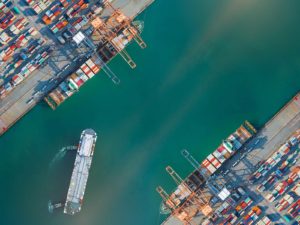 A slew of intertwined, international challenges have now taken root: supply bottlenecks and port congestion issues that move from timezone to timezone, labor disruptions stemming directly from new COVID-19 outbreaks or local scarcity, and rising fuel costs that will probably persist as the Russian-Ukraine war continues. All these risks to business operations will continue to cause delays and drive up costs.
A slew of intertwined, international challenges have now taken root: supply bottlenecks and port congestion issues that move from timezone to timezone, labor disruptions stemming directly from new COVID-19 outbreaks or local scarcity, and rising fuel costs that will probably persist as the Russian-Ukraine war continues. All these risks to business operations will continue to cause delays and drive up costs.
For example, all of Ukraine’s Black Sea ports are out of commission due to a Russian naval blockade, including the laying of mines—some of which are floating freely near shipping routes. Approximately 80% of Ukraine’s grain exports normally move through its southwestern ports, with Odesa being the largest. In just the first two months of the war, over 4 million tons of wheat have been taken off the global market, with the largest importers of Ukrainian wheat—Egypt, Indonesia, Turkey, Pakistan, and Morocco—facing potentially significant food shortages later in the year.
This reality has come front and center for policymakers, as outlined in the just-released Economic Report of the President from the Council of Economic Advisers. As stated in the New York Times:
The report dedicates one of its seven chapters to supply chains, noting that the once-esoteric subject “entered dinner-table conversations” in 2021 … U.S. manufacturers have increasingly relied on parts produced in low-cost countries, especially China, a practice known as offshoring. At the same time, companies have adopted just-in-time production strategies that minimize the parts and materials they keep in inventory, in an attempt to maximize returns to shareholders.
“Because of outsourcing, offshoring and insufficient investment in resilience, many supply chains have become complex and fragile,” they write, adding: “This evolution has also been driven by shortsighted assumptions about cost reduction that have ignored important costs that are hard to turn into financial measures, or that spilled over to affect others.”
Grappling with what is in front of us
Looking forward, the new reality is that better understanding and managing weak points in the supply chain will become an increasing responsibility for managers in all companies, especially logistics firms. This process will not become any less challenging, meaning new and enhanced tools will have to be brought to bear as the global supply chain, under unremitting stress, is transformed into something other than what it has been.
Two of the primary instruments that will allow for the better management of supply chain operations and the curtailment of risk from continued interruptions to the system are advanced tracking systems and predictive analytics. These will be key to resolving challenges to the global supply chain and restoring the highest level of functioning to it.
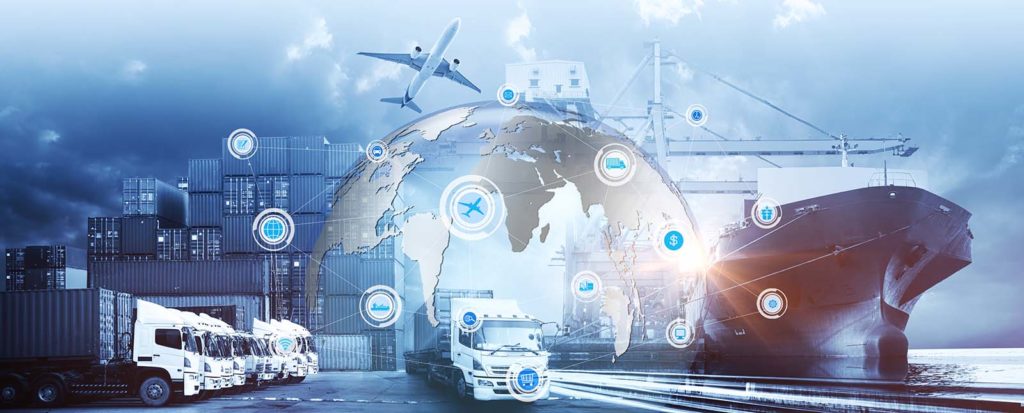
One joint solution
Gravity’s core business solution is providing clients complete control of their production process through order management and full end-to-end supply chain visibility. With offices in five cities on four continents, Gravity uses integrated, cloud-based software solutions to incorporate the status of manufacturers, logistics service providers, and retailers to enhance the total visibility of a supply network. From product concept, sourcing, and ordering to delivery, Gravity helps its clients stay informed every step of the way.
Since it is a company founded by three individuals hailing from three different countries, Spire Maritime is premised on the idea of collecting and sharing information from a broad range of perspectives. In Spire’s case, this is done with a network of satellites that constantly collect rich, granular maritime data spanning the entirety of the Earth’s oceans. The information that Spire shares is used in a wide variety of ways, from minimizing the impact of natural disasters to protecting assets and optimizing operations.
How Gravity Supply Chain solutions uses Spire AIS data
Gravity regularly uses the data of third-party logistics (3PLs) providers. The key is that the data is not only up-to-date and error-free but also dynamic enough to deliver the location of vessels during transit, and not just departure and estimated arrival times.
As a source of granular AIS data, Spire specializes in the collection, analysis, and distribution of maritime intelligence. Its partnership with Gravity creates a validated source of decoded satellite AIS data through a simple Application Programming Interface (API). Spire’s data is seamlessly integrated into Gravity’s proprietary software solutions.
“Gravity is seeing more and more customers understanding and valuing the impact of supply chain visibility and risk mitigation. This understanding plays a pivotal role in the overall value chain proposition we provide our customers,” explains Gravity’s CEO and founder Graham Parker.
“By working closely with hand-picked, collaborative data providers, Gravity mitigates risk by providing clients with full visibility, and complete transparency on what is happening in their supply chain. Essentially, this enables decision-making with certainty. Spire is one of these chosen, vital partners.”
Share on Facebook Share on Twitter Share on LinkedIn
“By giving customers more visibility and greater confidence to accurately predict delivery of goods, Gravity is playing a massive role in driving global supply chain efficiency,” says John Lusk, Chief Operating Officer at Spire Maritime.
“Spire is proud to partner with a company whose efforts are not only driving reduced fuel consumption costs but also helping to reduce carbon emissions in populated areas. We are big proponents of efficiency throughout the entire supply chain and know that the best way to solve last-mile delivery problems is to start tracking and tracking action from the first mile.”
Share on Facebook Share on Twitter Share on LinkedIn
The value added to the data
The joint efforts of Gravity and Spire afford advanced tracking systems and predictive analytics for clients that need to get a handle on what’s going on in their slice of the global supply chain. The overall system is being rocked by numerous challenges and every company is locked in it is liable to get swept up in the turmoil.
Customers have more information and authority using Gravity’s solutions thanks to the data Spire can convey. They will be better able to resolve their supply chain challenges, including understanding earlier when new resources need to be found. Ultimately, end users can act with confidence when making decisions, including more confident decision-making when making purchases, mitigating risks, monitoring margins, and increased accuracy in stock level forecasting.
Röhlig: The solution at work

A specific case where the dual solution of Global and Spire is offered is that of Röhlig Logistics, a German company based in Bremen with a global customer base spanning over 30 nations. Founded in 1852, it is today an international freight forwarder that offers a suite of air and sea services to clients in multiple verticals that are all facing increasing pressure in areas like time-to-market to sustainability.
In 2016, Röhlig onboarded Gravity as its LogTech order management solution to help clients improve their digital offering and better support the end-to-end journey of their products. By incorporating Gravity’s proprietary software, Röhlig empowered its clients to connect directly with supplier networks, place orders, monitor production, and receive advanced tracking and predictive analytics on the delivery of their goods. This was an origin-to-destination solution that included Röhlig customers incorporating the Gravity software into their operations.
The platform offers invaluable insights. By fully integrating the tracking of the production process, clients receive detailed logistics, including key performance indicators (KPIs) and scorecard data that inform buying decisions.
But as happened to everyone when COVID-19 hit, what were once dependable sources of information and assumptions based on past performance got thrown out the window.
With the granular tracking data that Spire distributes, which is now incorporated into Gravity’s product line, Röhlig’s customers are gaining insight and visibility. This includes detailed vessel tracking information, allowing them to better plan around the realities of their inbound scheduling that is sometimes a moving target due to sudden bottlenecks and port congestion issues that Spire picks up on in real-time, and the concurrent ability to quickly react to risks as they happen.
In a time of crisis and profound change, this kind of advanced data helps Röhlig’s customers to control their costs, monitor margins, forecast stock levels, and ultimately provide a better experience for their downstream customers in a highly competitive and turbulent marketplace. The companies plugged into Gravity’s software now benefit directly from the powerful array of satellite tracking and historic AIS data Spire provides, allowing them to better predict what current suppliers will be able to deliver and how potential new ones will perform.
Harnessing collective intelligence
The kind of enhanced tracking and supply chain data points that the Gravity/Spire partnership can give clients is going to become the base of what is needed to manage logistics in the post-COVID-19 world.
As Nada Sanders, a Distinguished Professor of Supply Chain Management at the D’Amore-McKim School of Business at Northeastern University put it in a recent presentation when talking about contemporary supply chains, “They were simply too frail and collapsed under the weight of this prolonged pandemic. But I’m also going to tell you that global crises are the new normal. You can see I put here crises not crisis. When we first started out we didn’t know how long this would last. I think all of us thought that within a month or two we’d be back to normal. This is year three that we are doing this.”
The lecture Sanders was giving on April 5, 2022 was entitled “Global Supply Chains: Current State, the Future, and Using Collective Intelligence for Redesign.” The collective intelligence concept is premised on the superiority of decisions that are made through collaboration and collective efforts.
The tech-driven solution that Gravity and Spire are bringing to market together is just the kind of collective intelligence that will be required to better manage the vast supply chain infrastructure that sprung into being over the past two decades.
“We have all kinds of problems going on and so redesign is going to be essential. And that is going to require, I think, our leaders moving away from the whack-a-mole strategy,” Sanders said in concluding her lecture. “Moving away [from wanting] to point to one thing. But to actually combine human and machine intelligence to get some real solutions.”
 Written by
Written by Graham Parker
Graham Parker John Lusk
John Lusk